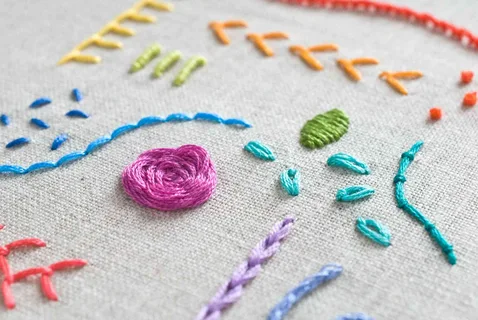Are you frustrated with alignment problems in your embroidery designs? Don’t worry, you’re not alone! Many embroiderers encounter issues with getting their designs to line up perfectly. But fear not, because today we’re going to troubleshoot those alignment woes and help you achieve flawless results every time! Whether it’s design placement, stabilizers, or thread tension causing the trouble, we’ve got all the tips and tricks you need to conquer these challenges. So grab your hoop and let’s dive into the world of troubleshooting embroidery alignment problems!
Design placement
Design placement is a crucial aspect of embroidery. It can make or break the final result of your project. So, how can you troubleshoot alignment problems related to design placement? First and foremost, take the time to carefully measure and mark your fabric before starting any stitching. Use rulers, measuring tapes, or templates to ensure accurate placement.
Another helpful tip is to use water-soluble markers or chalk to draw guidelines directly on your fabric. These guidelines will act as reference points for aligning your design properly. Remember to test these marking tools on scrap fabric first to avoid any permanent stains.
If you’re working with a pattern that requires multiple designs in close proximity, consider using templates made from sturdy materials like plastic or cardboard. These templates can be used repeatedly and help maintain consistent spacing between designs.
Additionally, it’s important to pay attention to the directionality of your design elements when placing them on your fabric. Consider how they flow together and whether they complement each other visually.
Don’t forget about hoop size! Using a hoop that matches the size of your design will greatly aid in achieving proper alignment. Make sure the entire design fits comfortably within the hoop without being stretched or distorted.
By following these tips for design placement, you’ll be well on your way to troubleshooting alignment problems and creating beautifully aligned embroidery designs every time. Visit http://katelynembroidery.com/.
Using a hoop
Using a hoop is an essential step in troubleshooting alignment problems with your embroidery design. The hoop helps to hold the fabric taut, ensuring that your design is stitched accurately and stays aligned throughout the process.
To begin, make sure you are using the correct size hoop for your project. A hoop that is too small can cause distortion and misalignment, while a hoop that is too large may not provide enough tension. Take into consideration the size of your design and choose a hoop accordingly.
Next, position your fabric within the hoop so that it is centered and evenly stretched. Use the tightening screw or mechanism on the hoop to secure it in place. Ensure that there are no wrinkles or puckering in the fabric as this can affect how well your design aligns.
As you stitch, periodically check that your embroidery remains aligned within the confines of the hoop. Adjust if necessary by gently repositioning or tightening/loosening sections of fabric as needed.
Remember to handle your embroidered piece carefully after stitching to maintain its alignment. Remove it from the hoop gently, being mindful not to pull or distort any stitches.
Following these tips when using a hoop will help troubleshoot alignment problems with embroidery designs and ensure consistently accurate results every time!
Stabilizers
Stabilizers play a crucial role in ensuring proper alignment and stability of your embroidery design. These materials provide support to the fabric and prevent it from shifting or puckering during the stitching process.
One type of stabilizer commonly used is tear-away stabilizer. As the name suggests, this type can be easily torn away once the embroidery is complete. Tear-away stabilizers are ideal for lightweight or delicate fabrics as they offer temporary support without leaving any residue behind.
Another option is cut-away stabilizer, which provides long-term stability to your embroidery design. This type of stabilizer remains in place even after the stitching is done, offering continuous support and preventing stretching or distortion of the fabric over time.
Water-soluble stabilizers are also available and are particularly useful when working on sheer or transparent fabrics. They dissolve completely with water, leaving no trace behind once your embroidery project is finished.
It’s important to choose the right kind of stabilizer based on your fabric and design requirements. Experimenting with different types will help you determine which one works best for each project.
Remember that using multiple layers of stabilizer may be necessary for certain designs or fabrics that require extra stability. Always follow manufacturer instructions regarding hoop placement and layering techniques for optimal results.
By understanding how different types of stabilizers work and experimenting with them, you can troubleshoot alignment problems more effectively while achieving professional-looking results in your embroidery projects. So go ahead, grab some stabilizers, get creative, and enjoy embroidering!
Thread tension
Thread tension is a crucial factor when it comes to troubleshooting alignment problems in embroidery designs. Incorrect thread tension can result in uneven stitches, puckering or pulling of the fabric, and misalignment of design elements.
To ensure proper thread tension, start by checking your machine’s manual for recommended settings. Adjusting the tension dial or knob on your machine can help achieve the desired results. It’s important to find the right balance where the top and bottom threads meet smoothly on both sides of the fabric.
Another tip is to check if there are any obstructions or tangles in your thread path that could be causing issues. Clean out any lint buildup and rethread the machine carefully, making sure the thread is properly seated in all guides and tensions discs.
Experimenting with different types and weights of threads can also help troubleshoot alignment problems. Some fabrics may require lighter or heavier threads for better results. Additionally, using a good quality thread that matches your project will significantly improve stitch quality.
Regularly testing your stitch-outs before starting on your main project can help you identify any potential alignment issues early on. Making adjustments to thread tension as needed throughout the stitching process will ensure precise placement and alignment of design elements.
Remember, practice makes perfect! With some patience and attention to detail, you’ll be able to troubleshoot alignment problems with ease and create beautiful embroidery designs every time.
Needle and thread selection
Needle and thread selection is an important aspect of troubleshooting alignment problems with your embroidery design. Choosing the right needle and thread can greatly impact the overall quality of your stitches and ensure that your design is perfectly aligned.
When it comes to needles, there are different types available, such as sharp needles for woven fabrics and ballpoint needles for knits. It’s crucial to select a needle that matches the fabric you’re working with to avoid any snagging or stretching issues.
Similarly, thread selection plays a significant role in achieving precise alignment. The weight and type of thread you choose should complement your fabric. Thicker threads may cause distortion while finer threads might get lost in intricate designs.
Experimenting with different combinations of needle and thread can help troubleshoot alignment problems. Start by testing on a scrap piece of fabric before attempting your actual embroidery project. This way, you can observe how well the chosen combination works together.
Remember to also consider the color contrast between the thread and fabric when selecting both elements. High contrast will make any misalignment more noticeable, so choose colors that complement each other well for optimal results.
Paying attention to needle and thread selection is essential for troubleshooting alignment problems in embroidery designs. Taking into account factors like fabric type, thickness, color contrast, will greatly contribute to achieving precise alignment in your projects!
Seam allowance
Seam allowance is an important aspect to consider when troubleshooting alignment problems in embroidery designs. It refers to the distance between the edge of the fabric and the stitching line. While it may seem like a minor detail, improper seam allowance can greatly affect the overall look of your design.
One common issue that can arise from incorrect seam allowance is misalignment of elements within your design. If you’re finding that certain parts of your embroidery are not lining up correctly, it’s worth checking if your seam allowances are consistent throughout.
In addition, inconsistent or too small seam allowances can cause distortion and puckering in the fabric around the embroidered area. This can make your design appear uneven or distorted, detracting from its visual impact.
To troubleshoot alignment problems related to seam allowance, take note of any variations in how much fabric you’re allowing on each side of your stitching line. Use a ruler or measuring tape to ensure consistency and adjust as needed before starting your embroidery project.
Remember, paying attention to even the smallest details like seam allowance can make a big difference in achieving professional-looking results with your embroidery designs.
Final thoughts
Troubleshooting alignment problems with your embroidery design can be frustrating, but with the right techniques and attention to detail, you can overcome these challenges. Remember that design placement is key – take the time to carefully position your design before stitching it out.
Using a hoop is essential for keeping your fabric taut and preventing shifting during embroidery. Be sure to select the appropriate stabilizer for your project to provide support and maintain crisp lines in your designs.
Thread tension plays a crucial role in achieving proper alignment. Experiment with different thread tensions until you find the sweet spot that produces even stitches without distorting or pulling on the fabric.
Choosing the correct needle and thread combination is another factor that affects alignment. Use a needle size appropriate for your fabric type, and match it with thread thickness that complements both the design complexity and fabric weight.
Don’t forget about seam allowance – if you’re working on a garment or accessory item, make sure there’s enough space around your design so it doesn’t get cut off when sewn together.
By implementing these troubleshooting tips into practice, you’ll enhance precision in aligning embroidery designs successfully!
Remember, patience is key when troubleshooting alignment issues. Take breaks if needed, step back from your work, and approach it with fresh eyes later on. Don’t be discouraged by setbacks; instead, embrace them as learning opportunities to improve your skills!
With practice and perseverance, you’ll become more proficient at troubleshooting alignment problems with your embroidery designs. So don’t give up! Keep experimenting, keep learning from mistakes, and most importantly – enjoy every stitch along the way!
Happy embroidering!





























